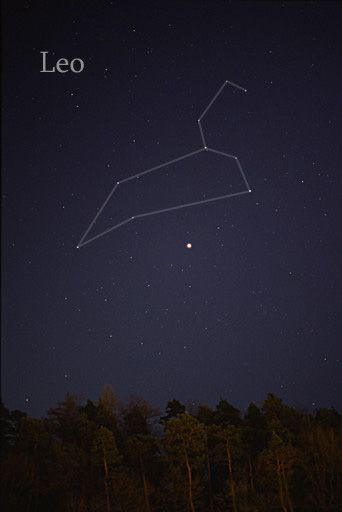Regulus: Leo Constellation Star Spins Nearly Fast Enough To Destroy Itself

One of the brightest stars in our sky sends out light in a special way as it spins almost fast enough to tear itself apart.
A team of researchers was studying the star Regulus to learn more about it, including how fast it rotates, when they observed the phenomenon for the first time. They found that in addition to a spin that is almost fast enough to break it into pieces, the star emits polarized light — in which the electromagnetic wave is moving in only one direction. That discovery comes half a century after the Indian astrophysicist Subrahmanyan Chandrasekhar predicted that rapidly rotating stars could emit this light.
Regulus is in the Leo constellation and is a fairly bright point in the sky. During the total solar eclipse that swept across the United States in August, it was close to the sun and thus was visible to some people during that astronomical event.
According to the scientists’ study in the journal Nature Astronomy, Regulus is spinning at almost 200 miles per second.
“We found Regulus is rotating so quickly it is close to flying apart, with a spin rate of 96.5 percent of the angular velocity for breakup,” first study author Daniel Cotton said in a statement from the University of New South Wales. “Equivalent to traveling from Sydney to Canberra in less than a second.”
Regulus is almost 80 light years away from Earth and is a few hundred million years old.
The university said this team of scientists used a telescope at the Siding Spring Observatory in New South Wales to make the observations, which “provided unprecedented insights into the star.”
After Chandrasekhar predicted the polarized light coming from a rapidly spinning star, other scientists had suggested that it was the “squashed shape” of such a star that would cause the light to become polarized, the university explained. But the discovery made from New South Wales represents the first time researchers have seen this in action.
In their study, the scientists referred to it as “rotation-induced polarization.”
“We have also been able to combine this new information about Regulus with sophisticated computer models we have developed” to further uncrack the star’s mysterious nature, Cotton said.
That includes that its inclination, which is the angle of its axis compared to the line of sight to the star from Earth. According to the study, the inclination of Regulus is more than 76.5 degrees.
The study has greater implications than witnessing the phenomenon of rotation-induced polarization for the first time. The researchers wrote that “the accurate measurement of rotation in early-type stars is important for understanding their stellar environments and the course of their evolution.”
Those star environments and evolution are linked to the rest of the universe.
“It has previously been extremely difficult to measure these properties of rapidly rotating stars,” Cotton explained. “Yet the information is crucial for understanding the life cycles of most of the hottest and largest stars in the galaxies, which are the ones that produce the heaviest elements, such as iron and nickel, in interstellar space.”
© Copyright IBTimes 2024. All rights reserved.





















